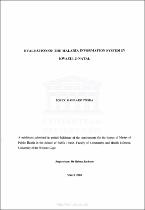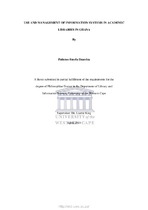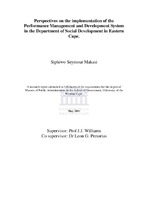| dc.description.abstract | Malaria is a parasitic disease transmitted by mosquitoes. If no prompt action is taken, malaria infection can result in death. The Malaria Information System was established to assist in planning and making decisions about malaria control activities. As a disease surveillance tool,
the Malaria Information System should be able to provide accurate, timely and useful information for rapid response particularly, during malaria outbreaks. Furthermore, in order to ensure that the Malaria Information System is adequate to assist in planning and making decisions regarding malaria control activities, the system should be evaluated regularly. However, since its establishment in the 1980s the Malaria Information System has never been evaluated. The researcher evaluated the Malaria Information System by conducting a rapid
survey of key informants. In addition, the researcher assessed the Malaria Information System data quality through document review. The evaluation used selected components from the World Health Organization Protocol for assessment of national communicable diseases
surveillance system and response system and the Centers for Disease Control and Prevention Guidelines for evaluating public health surveillance systems.
The assessment of the MIS data quality using general data accuracy checks found less than l0o/o of errors in three of the six fields detected with missing data items. The remaining three fields had overall 27%o of errors each. Data accuracy checks using specific methods found no
errors. Assessment of data quality using data validation found discrepancies between the MIS cases and the DOH Cases. During the years 1990 - 1997 the national malaria notification system reported ll- 67% less cases than the MIS Cases for South Africa. Major differences
between these systems were reported in 1993, 1995 and 1996. A similar pattern of reporting was obtained for KwaZulu-Natal except that in 1991 there were no differences between the MIS cases and the DOH cases. Another difference is that the MIS cases reported 21% less
cases in than the DOH cases in 2001. In Mpumalanga the two reporting systems were similar in 1992 and 1998-1999. All other years had discrepancies of ll-79oh. In Limpopo the discrepancies were similar to KwaZulu-Natal and Mpumalanga except that the MIS cases were
l8% less than the DOH cases in 2000. The evaluation reveals that the Malaria Information System uses simple data processing tools,
it is easily adaptable to new changes, it is acceptable and reliable and provides timely data for the Malaria Control Programme managers to make operational plans and decisions for malaria control. Furthermore, the electronic record review revealed negligible elrors in the MIS
database. The discrepancies in reporting of malaria cases that existed between the Malaria Information System and the national Department of Health notification system during 1990-1997 have improved greatly since 1998. Although the discrepancies in reporting in the provinces during 2000-2001 reached 20Yo, these are not reflected in the cases for South Africa as a whole. However, the magnitude of these discrepancies needs further investigation. This will ensure good quality of the MIS data not only in the provinces, but South Africa as a
whole. Other recommendations include the MIS staffing, staff straining, computer support systems, database design and regular evaluation of the MIS. | en_US |




